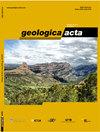墨西哥湾Yucatán平台Chicxulub陨石坑中央段地震成像及属性分析
IF 2
4区 地球科学
Q2 GEOLOGY
引用次数: 4
摘要
希克苏鲁伯陨石坑(Chicxulub Crater)是约66Ma前由小行星撞击墨西哥湾南部形成的,是陆地记录中保存最完好的三个大型多环盆地。火山口构造以半圆形同心圆环型为特征,标志着火山口盆地、峰环、阶地带和基底隆起。利用地震属性、标志层位、等值面和三维视图对19条地震反射剖面网格进行分析,研究了中部地区的地层学。利用交互式软件和常规应用绘制了冲击角砾岩、角砾岩-碳酸盐岩接触层和冲击后碳酸盐岩分布图。在地震图像中识别了四个以高振幅反射体为标志的层位,并进行了横向相关。采用复迹属性分析进行岩石物性表征。构造了地层包体底部和顶部的表面等高线图,绘制了冲击作用和冲击前后碳酸盐岩地层。以冲击角砾岩与上覆碳酸盐岩接触为标志的盆地底板由横向不连续的高振幅反射体显示。不连续散射反射体解释为陨石坑底部下方的上部角砾岩,平均厚度约为300msm。古近系沉积单元具有横向连续性的多反射体特征,与下伏角砾岩的地震响应形成对比。基底古新世沉积物跟随盆地底隆起。剖面上,碳酸盐岩地层以水平反射为特征,被区域不整合所打断。不整合面上的上/下包记录了一段时期的海平面变化。本文章由计算机程序翻译,如有差异,请以英文原文为准。
Seismic imaging and attribute analysis of Chicxulub Crater central sector, Yucatán Platform, Gulf of Mexico
Chicxulub Crater, formed ~66Ma ago by an asteroid impact on the southern Gulf of Mexico, is the best preserved of the three large multi-ring basins in the terrestrial record. The crater structure is characterized by a semi-circular concentric ring pattern, marking the crater basin, peak ring, terrace zone and basement uplift. Analysis of a grid of 19 seismic reflection profiles using seismic attributes, marker horizons, contour surfaces and 3-D views is used to investigate the stratigraphy of the central zone. We used interactive software and routine applications to map the impact breccias, breccia-carbonate contact and post-impact carbonates. Four horizons marked by high-amplitude reflectors representing high-impedance contrasts were identified and laterally correlated in the seismic images. Complex trace attribute analysis was applied for petrophysical characterization. Surface contour maps of base and top of stratigraphic packages were constructed, which mapped the impactites and post- and pre-impact carbonate stratigraphy. Basin floor, marked by the contact between the impact breccias and overlying carbonates is shown by laterally discontinuous high-amplitude reflectors. Discontinuous scattered reflectors interpreted as the upper breccias beneath the crater floor, have an average thickness of ~300msm. The Paleogene sedimentary units are characterized by multiple reflectors with lateral continuity, which contrast with the seismic response of underlying breccias. The basal Paleocene sediments follow the basin floor relief. Upwards in the section, the carbonate strata are characterized by horizontal reflectors, which are interrupted by a regional unconformity. Onlap/downlap packages over the unconformity record a period of sea level change.
求助全文
通过发布文献求助,成功后即可免费获取论文全文。
去求助
来源期刊

Geologica Acta
地学-地质学
CiteScore
2.50
自引率
6.70%
发文量
13
审稿时长
>12 weeks
期刊介绍:
- Relevant conceptual developments in any area of the Earth Sciences.
- Studies presenting regional synthesis.
- Thematic issues or monographic volumes presenting the results from one or more research groups.
- Short papers reflecting interesting results or works in progress.
- Contributions and results from Research Projects, Workshops, Symposiums, Congresses and any relevant scientific activity related to Earth Sciences.
- Geologica Acta aims to stimulate rapid diffusion of results and efficient exchange of ideas between the widespread communities of Earth Science researchers (with special emphasis on Latinamerica, the Caribbean, Europe, the Mediterranean
 求助内容:
求助内容: 应助结果提醒方式:
应助结果提醒方式:


